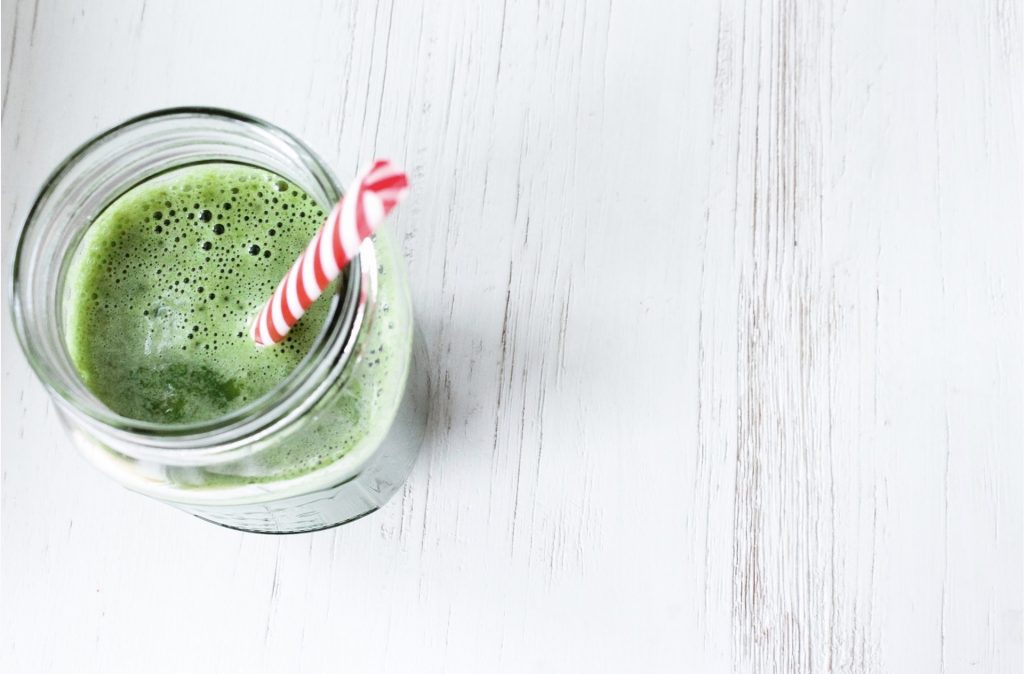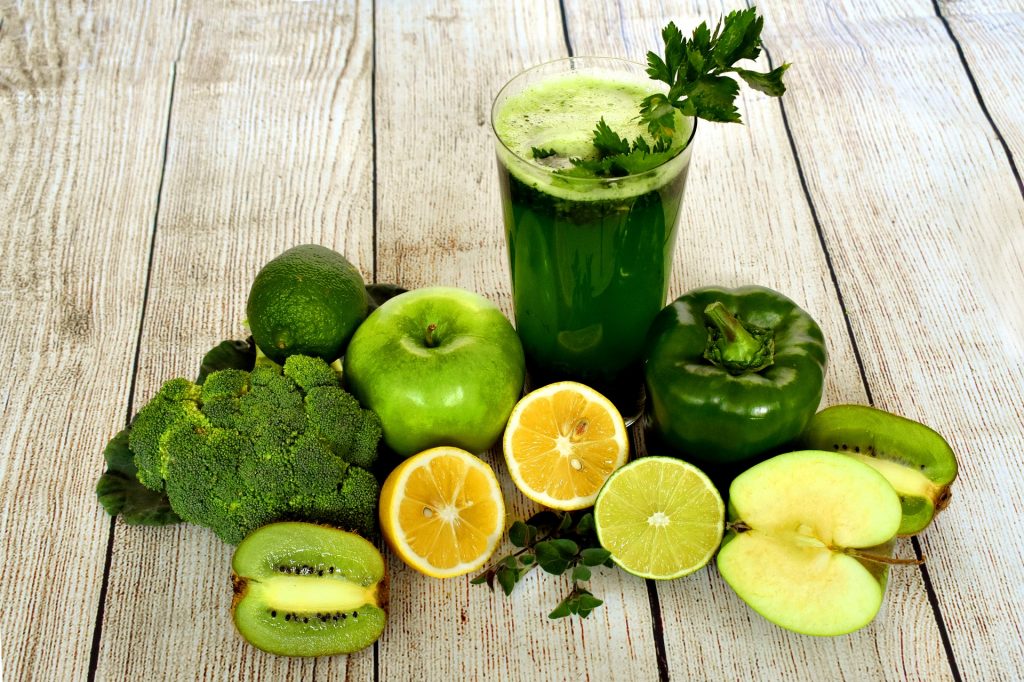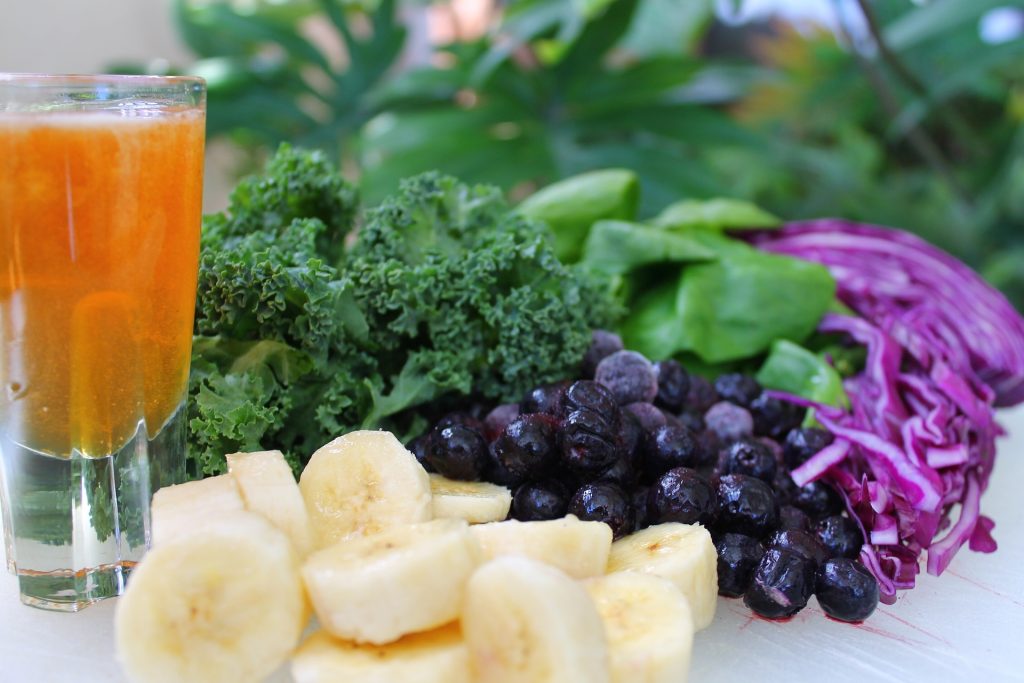Juice, Juice, Baby
Perhaps one of the most recent nutrition related trends that has spread like wildfire is the idea of “juicing.” Nearly every major city, and even some smaller towns, are swarming with new juice shops. But what are the actual benefits of drinking juices, and what are simply fabrications by marketing teams?
Number One Tip: Read Nutrition Labels
The nutritional value of a juice depends on what is in it. When it comes to juices, the most common drinks are those which have multiple fruits and vegetables blended into them. Juices are excellent sources of vitamins and minerals, but depending on the ingredients, they can also be very high in sugar and therefore calories. Some fruit juices can even have as much sugar as soda! Therefore, you should always look at the ingredient list and nutrition label before purchasing a juice.
Here’s an Easy Trick: Consider the Ratio of Fruit to Vegetables Within a Juice
While fruits are an excellent source of vitamin C, there are also many vegetables that provide this vitamin without bringing along the high sugar content. Some fruit such as apples and pineapples also tend to make a lot of juice, so even in products that have multiple other healthy ingredients, the bulk of the juice probably comes from these two fruits and only a small amount from the other ingredients. If you want to avoid having juices that are full of sugar and calories and instead stick to those higher in nutrients, try sticking to juices that are predominantly (if not completely) made from vegetables.
Here is an example:
A 2 cup serving of juice with apple, kale, spinach, cucumber, parsley, and lemon contains 200 Calories and 34 grams of sugar.
A 2 cup serving of juice from the same brand containing celery, kale, spinach, cucumber, parsley, and lemon contains only 60 Calories and 10 grams of sugar.
These two juices are nearly identical, but simply replacing the apple for celery reduces both the Calorie content and sugar content by 70%.
The Downside of Juices
All About Fiber:
Fiber is an incredibly important nutrient found in fruits, vegetables, and whole grains that helps improve gut health and reduce cholesterol levels. Unfortunately, when fruits and vegetables are “juiced,” they lose most, if not all, of their fiber. Very few people in the United States actually consume enough fiber, and the idea of getting your fruits and vegetables from juice only makes this problem worse.
Juice Cleanses:
Another popular idea is the “Juice Cleanse” – a diet where an individual consumes only juices and water for an average of three days in order to “detoxify” their bodies. However, your body is really good at detoxifying on its own! The liver and kidneys are the two organs responsible for filtering the blood and getting rid of toxins, and they do this efficiently without the aid of “juice cleanses.” In addition, because you do not consume anything other than juices and water during a cleanse, your diet can be deficient in many important nutrients.
The Main Takeaway:
 In summary, juices can be a great supplement to your diet because of the vitamins and minerals found in them, but they may not be a good thing to have on a regular basis because of the lack of fiber and high sugar content. Instead, try to get adequate amounts of whole fruits and vegetables in your diet in order to get the same benefits of juicing plus even more! However, if you are going to have a juice, try to have one that has a high concentration of vegetables to maximize your nutrient intake.
In summary, juices can be a great supplement to your diet because of the vitamins and minerals found in them, but they may not be a good thing to have on a regular basis because of the lack of fiber and high sugar content. Instead, try to get adequate amounts of whole fruits and vegetables in your diet in order to get the same benefits of juicing plus even more! However, if you are going to have a juice, try to have one that has a high concentration of vegetables to maximize your nutrient intake.




Comments